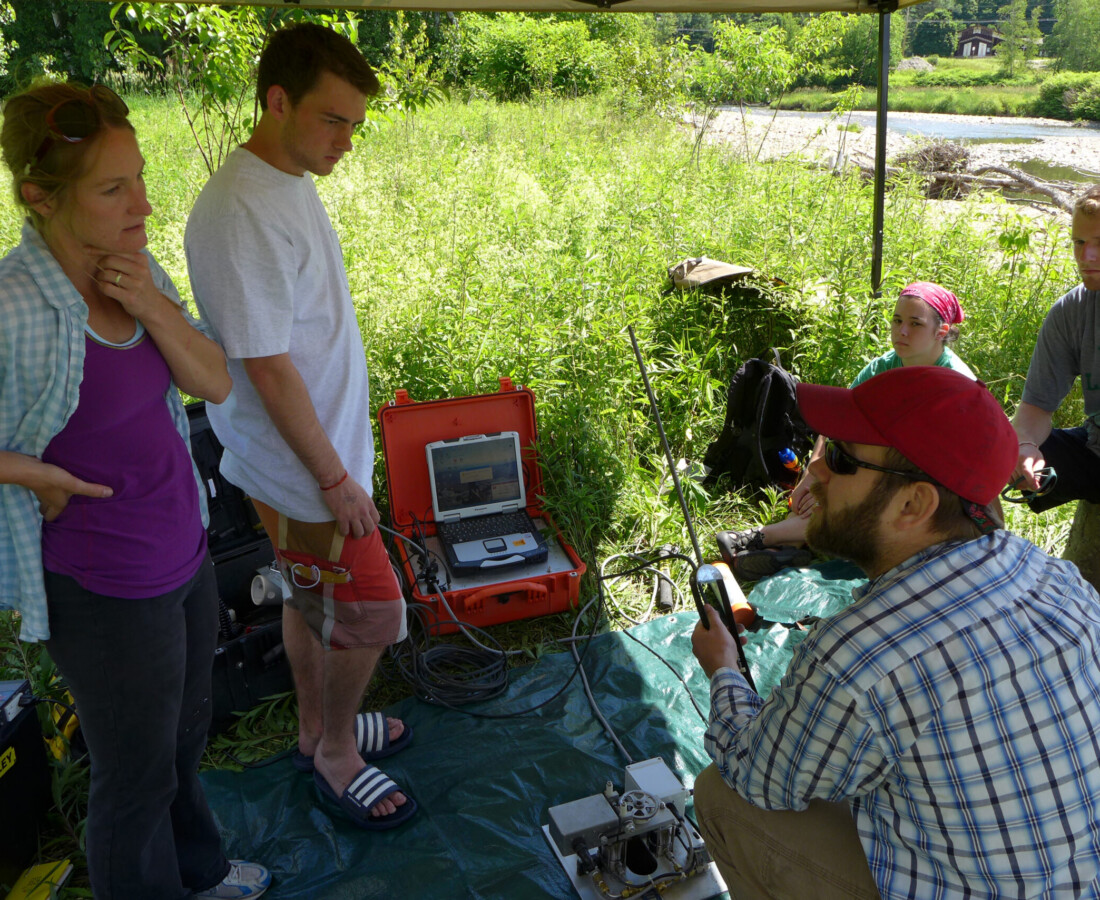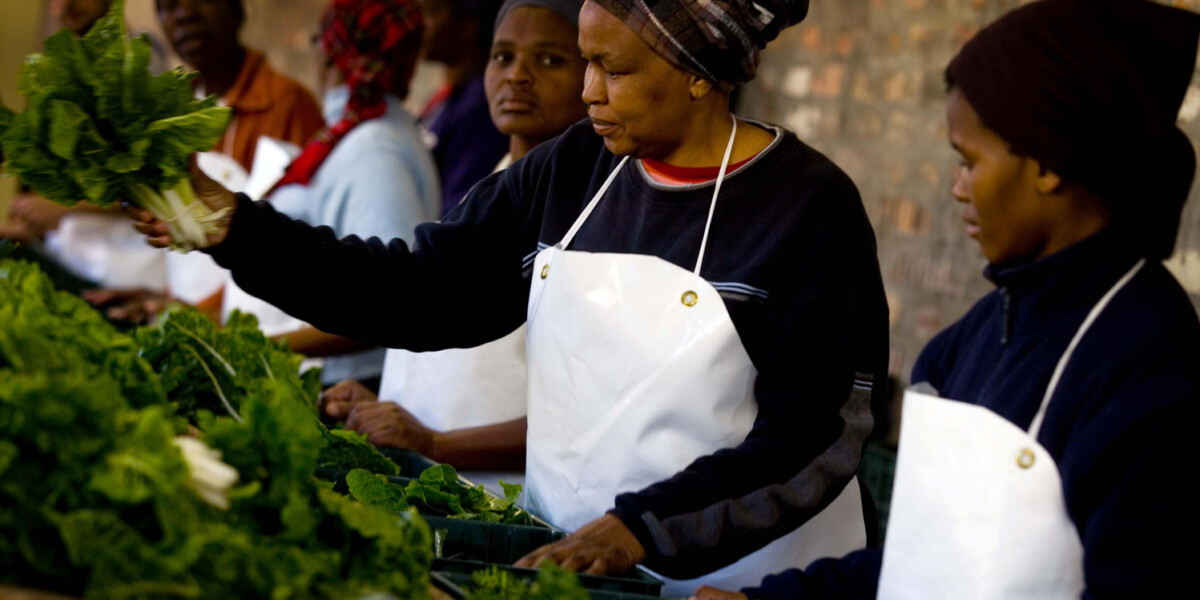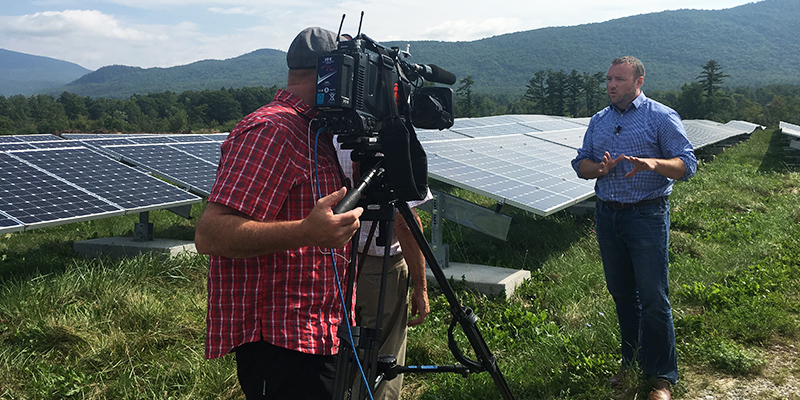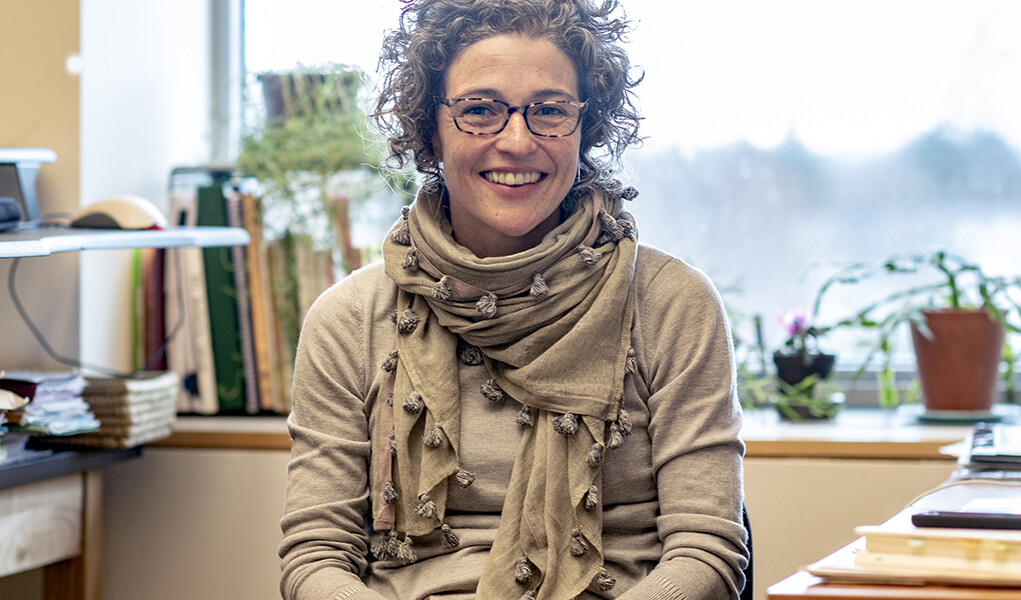By Sujata Gupta
When Hurricane Irene hit Vermont in 2011, the storm sent massive amounts of debris and sediment into the state’s waterways – an extreme erosion event that is helping Donna Rizzo, an environmental engineer in the University of Vermont’s College of Engineering and Mathematical Sciences, model how a changing climate will impact the state’s watersheds in coming years.
Using Environmental Tracking Patterns to Determine Watershed
Rizzo is a leader in developing complex computer algorithms that make sense of enormous datasets and applying them to watersheds. Such computer programs are designed to mimic activity inside the human brain and can therefore learn to sort information into recognizable patterns or clusters (while the human brain gets confused after about seven clusters, computers have no such limitations).
Imagine, for instance, trying to teach a computer to recognize breeds of dogs. First, the computer would be given a huge dataset of dogs and then trained to sort those dogs by everything from size to temperament to fur color to indicate breed: golden retriever, German shepherd, collie, mutt. Such a program could then learn to identify a dog without a known breed and find the closest match in the database.
Professor Rizzo initially started off as an anthropology major at the University of Connecticut in Storrs. But she soon tired of debating issues (i.e.: “Can you put the environment to the market test? No!” thought Rizzo, even as a freshman) and began to look into how to initiate actual change. Engineering seemed the clear choice. Following her graduation in 1983, and a series of meandering career moves, including a brief stint studying studio art in Florence, Italy, Rizzo began studying artificial intelligence and working as a participating guest at Lawrence Livermore National Laboratory in California. There, she was tasked with creating computer programs that showed the most efficient way of cleaning up contaminated groundwater sites. She soon realized that drilling a well required collecting copious amounts of information, yet that information was seldom used for anything other than the project at hand. Rizzo hoped to take that unused drilling data and create “intelligent” algorithms capable of identifying patterns in underground water movement. That approach, she suspected, could overhaul how drilling decisions are made, especially in a thirsty state like California.
Rizzo began studying that problem in graduate school at the University of California, Irvine, and soon followed her advisor, David Dougherty, to the University of Vermont. There, she became the first student in the school’s new civil and environmental engineering PhD program where she sorted out how to “meld artificial intelligence and environmental engineering” – as applied to drought or water quality. She was soon joined by Maggie Eppstein, now the chair of UVM’s computer science department. “Donna and I are PhD sisters,” Eppstein says. More recently, the two women have also become collaborators.
Applications of Environmental Research
After completing her doctorate in 1994, Rizzo and Dougherty started an environmental research company. But she returned to UVM in 2002, this time as a professor in the College of Engineering. Her first graduate student, a woman named Paula Mouser, now an engineering professor at Ohio State University in Columbus, was intrigued by the possibility of checking and tracking leaks from landfills by using microbes found in groundwater. Mouser suspected that the mere presence of certain microbes, such as those that eat methane, could indicate a leak and where it had traveled.
The Environmental Protection Agency already requires the collection and analysis of groundwater around landfill sites several times a year – a time-consuming and expensive process. Mouser reasoned that it might be simpler to test for the presence of certain microbes in the groundwater and see if they served as a valid proxy for a leak.
After settling on a landfill site in Schuyler Falls, NY (all the Vermont landfills were not leaking enough, Rizzo says), Mouser set to work collecting microbes. The two women also utilized a new algorithm, later modified by Eppstein and one of her grad students that made it easier to visualize clusters in datasets. The results were striking. The microbes were surprisingly good at indicating the border of a leak, where contamination levels are so low they may not be detectable in a lab, Rizzo says. Specifically, the researchers realized that microbial diversity increased as contamination decreased. That made sense. With no single contaminant bolstering the survival of a single species, multiple species could thrive along the border.
The beauty of her work, says Rizzo, is that it lets her dabble in myriad disciplines. She’s worked on everything from the market penetration potential for hybrid vehicles to the spread of Chagas disease. “I personally think I would get bored if I dedicated my entire career to one particular topic,” Rizzo says.
A case in point: In 2012, Rizzo collaborated with Mary Watzin, then an ecologist in UVM’s Rubenstein School and the current Dean of the College of Natural Resources at North Carolina State University in Raleigh, to identify the culprit behind cyanobacterial blooms in Lake Champlain. Traditional statistical methods, Watzin says, require some idea of that culprit or culprits and she was drawing a blank. Watzin knew from previous work with Rizzo that the programs she was using enabled the same sort of data analysis but without any preconceptions. So, says Watzin, “I gave [Rizzo] all my data.”
Rizzo, with PhD student Andrea Pearce, plugged in several variables, such as wind speeds, temperature, nitrogen and phosphorous levels, but didn’t tell the program when a bloom had occurred. Then, Rizzo says, “We let the algorithm loose on her data.” As Watzin looked on, the swirling mass of information soon settled into distinct clusters: bloom and no bloom. Watzin was stunned.
As Watzin looked closer at the “bloom” category, she was struck by the fact that the samples were rich in dissolved manganese and iron, two elements found only inside soil. Watzin knew that manganese tended to leech out of the soil when oxygen levels plummeted, as they would during periods of high stormwater runoff. Dissolved nitrogen and phosphorous, in the form of ammonium, also leech out of soil when oxygen dissipates but tend to be more transitory. So Watzin fed cyanobacteria in the lab ammonium. They flourished. That made clear to Watzin that the cyanobacteria were munching on sediments present at the bottom of the water column to initiate a bloom. “We want to really make sure that in the springtime that we’re not sending a bunch of phosphorous and organic matter down into the bay. If a bloom never gets started, then it’s hard to keep it going,” Watzin says.
Researchers at UVM are still trying to sort out another, related cyanobacteria question – what triggers a toxic versus a non-toxic bloom. The clustering there has been less clear. Sometimes when no clear pattern emerges, it means we’re not collecting the right types of data, Rizzo says. Computer programs are great at sifting through existing data, in other words, but they can’t make up for data that doesn’t exist.
Filling in those sorts of gaps in the data is the cornerstone of Rizzo’s recent efforts to understand how climate change will affect Vermont’s watersheds. She is part of a $28 million grant, distributed to various researchers across the state, aimed at helping policymakers determine how climate change will affect the state and its ecosystem. As part of that initiative, Rizzo and others have been scattering sensors throughout the Missisquoi and Winooski watersheds. Just as her work with Watzin made clear that we cannot understand what triggers a bloom by only sampling after such an event has occurred, Rizzo says, we cannot understand long-term changes along the watersheds without continuous monitoring. The new sensors will measure everything from water turbidity to phosphorous levels to erosion.
Soon, says Rizzo, she and her collaborators will be able to begin creating computer programs capable of identifying patterns in the chaos. This sort of analysis “is hard for the human brain,” she notes. “If it doesn’t fall out on a beautiful regression line, it’s hard for people to see a pattern.”
Sujata Gupta is a science writer living in Burlington.





